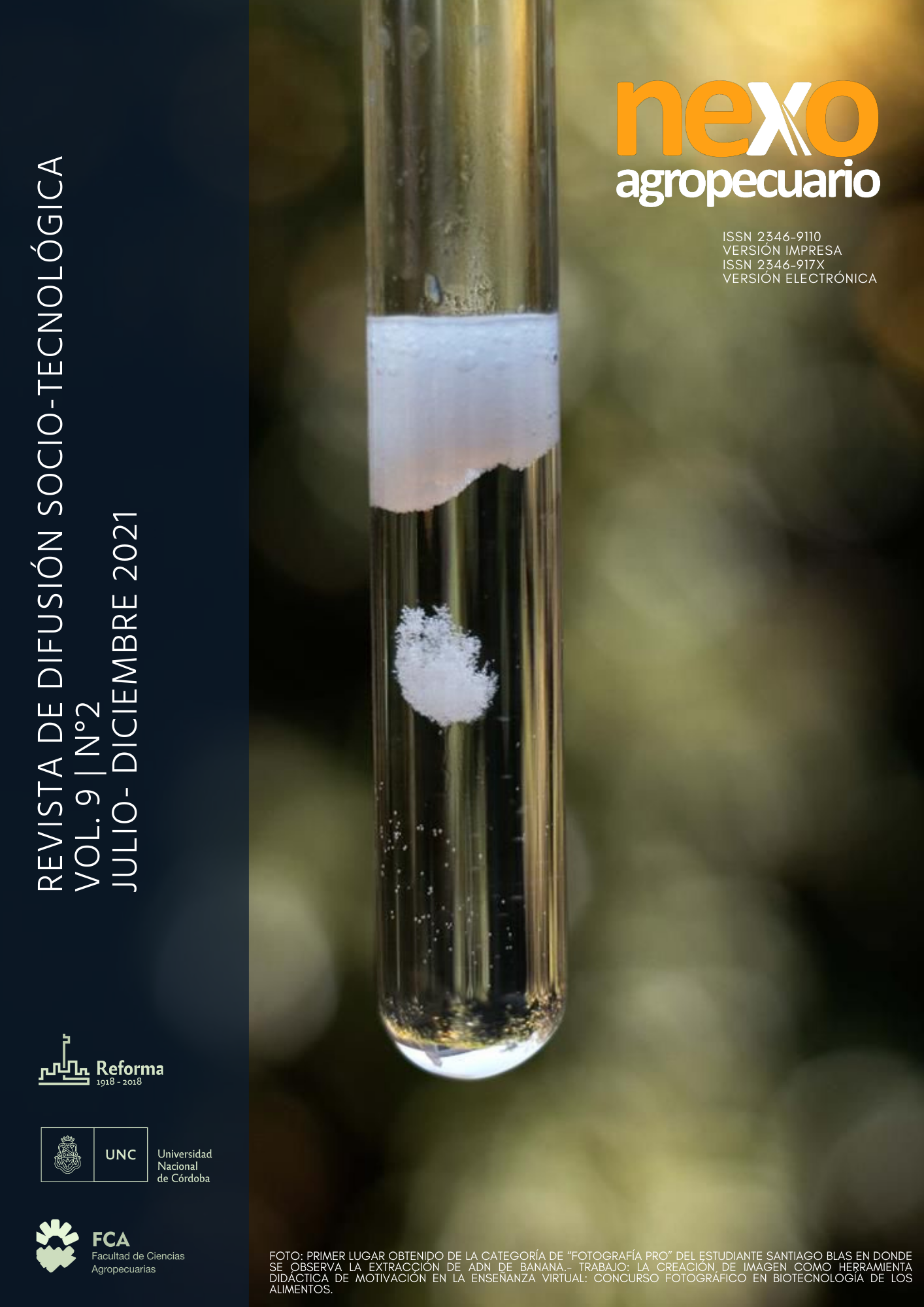Differentiation of citrus rootstock species and cultivars by the morphological characteristics of their seeds
Keywords:
quality, genetic identityAbstract
The exact knowledge of the species and / or variety of a rootstock determines the quality of the plant to be obtained and avoids using cups on incompatible rootstocks. Among the objectives of the Law on Seeds and Phytogenetic Creations No. 20,247 is to ensure the quality and identity of the seed that the producer acquires. The objective of this work is to be able to know the species and / or variety of a rootstock through the morphological characteristics of the seed. Using seeds from the rootstocks with which we work in Argentina, the quantitative morphological characteristics (length, width, thickness, length of the tip) were measured and the qualitative characteristics (color of the epidermis, color of the integuments) were observed. The parameters taken allowed to show significant differences between the different species and / or cultivars. With these differences, a dichotomous key was developed that allows differentiating the 21 rootstocks used in Argentina.
Downloads
References
Alsina M. 1988. Estudio Morfológico y Anatómico de las Semillas del Género Ornithopus L. (FABACEAE). Acta Botánica Malacitana, 13: 171 – 178. Málaga, España.
Anderson C. M.; G. BANFI, C. M.; Casafús, N. B.; Costa, A.; Fabiani, S. M.; Garran, G.; Marco, R.H.; Mika, J. A.; Mousques, M. I.; Plata Tamayo, D. E.; Vazquez, H. N.; Beñatena, E.; Danos, L.; Larocca, M.; Messina, M.; Ragone, R.; Rivas, N. y Vaccaro. 1996. Manual para Productores de Naranja y Mandarina. INTA CONCORDIA, Concordia, Entre Ríos. Capítulo 4; Págs. 2 y 3.
Chapot, H. y Praloran, J.C. 1955. Les graines de Citrus. Report of the Fourteenth International Horticultural Congress [Neth.] 2: 1294–1323.
Dhillon, R. S.; Kaundal, G. S.; Cheema, S. S. 1993. Nucellar embryony for propagating Citrus. Indian Hort. 38: 44-45.
K. Hamilton, S. Ashmore, R. Drew, 2007. Morphological characterization of seeds of three Australian wild Citrus species (Rutaceae): Citrus australasica F. Muell., C. inodora F.M. Bailey and C. garrawayi F.M. Bailey. Genetic Resources and Crop Evolution, volume 55, pages 683-693
Hodgson, R.W. 1967. Horticultural varieties of Citrus. En Reuther, W., Batchelor, L.D., Webber, H.J. (editores). The Citrus Industry. Volume 1. University of California, Berkeley, USA. Págs. 431-591.
International Board for Plant Genetic Resources (IBPGR) . 2000. Descriptores para los cítricos. Citrus spp. International Bureau of Plant Genetic Resources, Roma, Italia. Págs. 44-46.
Koltunow, A. M. 1993. Apomixis: embryo sacs and embryos formed without meiosis or fertilization in ovules. Plant Cell 5: 1425- 1437.
Ley 20.247, 1973 (http://www.infoleg.gov.ar)
Moreira, S.; Gurgel, J.T.; Arruda, L.F. 1947. Poliembrionia em Citrus. Bragantia, Campinas, v.7, n.3, p.69-106.
Reuther, W.; Batchelor, L. D.; Webber, H. J. 1968. “The Citrus Industry”. Vol II, Anatomy, Physiology, Genetics, and Reproduction. University of California – Division of Agricultural Sciences. USA. Pags. 308-310.
RHS Colour Chart, 2007, Royal Horticultural Society, Londres (Gran Bretaña).
Sánchez-Damas, J. J.; Avitia-García, E.; Castillo-González, A. M.; Villegas-Monter, A.; Corona-Torres, T. 2006. Estudio Anatómico de la Poliembrionía en Tres Portainjertos de Cítricos. Revista Chapingo Serie Horticultur 12(2); 145-152.
Sedgley, M.; Griffin, A. R. 1989. Sexual Reproduction of Tree Crops. Academic Press Inc. San Diego, CA. USA. pp. 82-92.
Toll Jubbes, J. y Padilla, E. 1974 “Embriones nucelares en citrus: características y utilización”. Universidad Nacional de Tucumán; Facultad de Agronomía y Zootecnia. Serie didáctica Nº 30. Tucumán. Págs. 8-10.
Downloads
Published
Issue
Section
License

This work is licensed under a Creative Commons Attribution-NonCommercial-ShareAlike 4.0 International License.
Aquellos autores/as que tengan publicaciones con esta revista, aceptan los términos siguientes:- Los autores/as conservarán sus derechos de autor y garantizarán a la revista el derecho de primera publicación de su obra, el cuál estará simultáneamente sujeto a la Licencia de reconocimiento de Creative Commons que permite a terceros compartir la obra siempre que se indique su autor y su primera publicación esta revista.
- Los autores/as podrán adoptar otros acuerdos de licencia no exclusiva de distribución de la versión de la obra publicada (p. ej.: depositarla en un archivo telemático institucional o publicarla en un volumen monográfico) siempre que se indique la publicación inicial en esta revista.
- Se permite y recomienda a los autores/as difundir su obra a través de Internet (p. ej.: en archivos telemáticos institucionales o en su página web) después del proceso de publicación del número de la revista, lo cual puede producir intercambios interesantes y aumentar las citas de la obra publicada. (Véase El efecto del acceso abierto).


